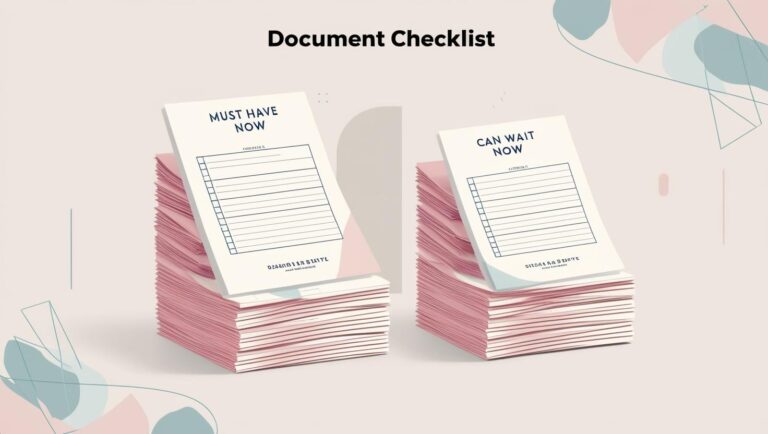Your First HR Audit: A Practical Guide for Small Businesses
Running a small business is no small feat. You juggle clients, operations, finances, and often every single hat in between. Amid all of that, HR can feel like a luxury — until a small compliance slip, a mismanaged leave record, or an unresolved workplace dispute turns into a real problem.
Here’s the truth: you don’t need a full-time HR manager to run a smart, simple HR audit. Even if you have only two employees, a quick check of your HR systems can save headaches, protect your business, and create a stronger workplace culture. Think of it as a health check for your business — spotting risks early, strengthening foundations, and giving you confidence to grow.
This guide walks you through a practical, step-by-step HR audit checklist designed for small businesses. It’s jargon-free, actionable, and focused on real-world outcomes rather than theory.
Why a Small Business HR Audit Matters
Before diving into the steps, let’s be clear about why an HR audit is valuable. Many small business owners skip formal HR processes, assuming compliance and best practices are only for big corporations. That’s a risky assumption.
A simple HR audit helps you:
Stay compliant: Employment laws, labour regulations, and workplace safety requirements still apply, no matter the size of your business.
Protect your business: Well-documented contracts, policies, and records can prevent disputes and legal issues.
Spot risks early: High turnover, unresolved conflicts, and unclear job roles are signs you need to act before small problems escalate.
Build a better workplace: Clear expectations, fair treatment, and transparent processes make employees feel valued and supported.
Think of an HR audit as a proactive strategy rather than a reactive chore. The goal isn’t perfection — it’s preparedness, clarity, and control.
Step 1: Review Employment Contracts
Contracts are the foundation of any HR system. If they’re missing, vague, or outdated, your whole HR framework is at risk.
Start by asking:
Does every employee have a signed contract?
Are the contracts clear and compliant with labour laws?
Do they cover notice periods, working hours, leave entitlements, disciplinary processes, and misconduct?
Even in a tiny business, every employee should have a contract tailored to their role. For example, if you run a small café with three staff members, your baristas should know exactly what hours they’re expected to work, how leave is managed, and what behaviour constitutes misconduct. A clear contract prevents misunderstandings before they happen.
If your contracts are outdated or generic, make updating them a priority. Keep it simple and compliant — you don’t need legalese-filled documents, but clarity and fairness are non-negotiable.
Step 2: Review Your Policies
You don’t need an HR manual the size of a novel. Even simple, one-page policies can provide a roadmap for consistent decision-making. At a minimum, ensure you have:
Leave policy (annual leave, sick leave, family responsibility leave)
Disciplinary process (steps for addressing misconduct)
Grievance or complaints procedure
Health and safety policy (even basic, covering hazards and emergency procedures)
Small businesses often overlook onboarding materials. If you have a welcome pack or introductory letter for new employees, that counts as part of your policy framework. These tools communicate expectations and create a sense of security for your staff.
For instance, a small design studio could include a policy for remote working, clear instructions on file management, and an outline of weekly check-ins. These policies help prevent confusion, reduce conflict, and set a professional tone.
Step 3: Map Out Your HR Records
Knowing where your HR records are and keeping them organised is critical. Start by identifying what you have and where it’s stored:
Staff contact information and emergency contacts
ID copies, contracts, and job descriptions
Leave records (annual, sick, or unpaid leave)
Disciplinary notes or performance reviews
Training records (even informal learning counts)
Digitally storing records is ideal, but physical files work too — just make sure they’re secure. Data privacy is important, even in small businesses. Lock cabinets, encrypt digital files, and restrict access to authorised personnel.
Imagine a small consultancy with five employees. If one employee has an incident at a client site, having proper records of training, contracts, and policies ensures you can respond professionally and fairly — instead of scrambling for documents or guessing what’s on file.
Step 4: Evaluate Job Clarity and Role Fit
High-performing teams thrive on clarity. When employees aren’t sure what’s expected, results become inconsistent, deadlines are missed, and frustration grows — for staff and owners alike.
Ask yourself:
Does each person understand their role and responsibilities?
Are job descriptions up-to-date and accessible?
Are performance expectations clear and measurable?
Even in a small business, formalised job descriptions aren’t overkill. For example, a small landscaping company might have two gardeners and one office assistant. Their tasks overlap, but a clear description of responsibilities — like who handles client quotes, who manages inventory, and who maintains machinery — prevents tension and keeps operations smooth.
Step 5: Check Leave Balances and Pay Records
One of the most common HR pitfalls is failing to track leave and payslips properly. This is often the first thing a labour compliance inspector or the CCMA will check in case of a dispute.
Do this:
Run leave balance reports and track usage.
Ensure employees are taking their entitled leave.
Confirm that payslips are issued regularly and accurately.
For instance, a small retail shop could have three employees with different leave entitlements. If leave isn’t tracked, one employee might unknowingly accrue excessive leave while another is denied proper days off, leading to frustration and possible legal exposure.
Step 6: Spot Early Warning Signs
HR audits aren’t just about paperwork. They’re also about observing the health of your workplace. Look for early warning signs:
Persistent team friction or unresolved conflicts
Frequent unexplained absenteeism
Complaints that aren’t formally logged
High turnover in specific roles
Spotting these issues early allows you to address root causes before they escalate. Maybe a sales assistant is quitting repeatedly because job expectations are unclear. Or perhaps a part-time employee’s repeated absenteeism reflects burnout. Observing patterns during your audit helps you make targeted interventions.
Step 7: Create an HR Action Plan
A successful audit doesn’t end with identifying gaps — it ends with a clear action plan. Focus on what’s urgent, what’s medium-term, and what requires ongoing attention.
Urgent: Fix missing contracts, incomplete leave records, or unsafe working conditions.
Medium-term: Update job descriptions, formalise policies, or create a training plan.
Ongoing: Schedule monthly check-ins, maintain records, and monitor employee satisfaction.
Even a one-page plan is effective if it’s actionable. Overcomplicated HR manuals often sit on a shelf, unused. Your goal is practical, simple, and realistic steps that actually improve your HR operations.
Turning Your HR Audit Into a Growth Tool
The benefits of an HR audit go beyond compliance. By assessing your contracts, policies, records, and culture, you gain insight into how your business functions and how your people operate.
For example, during a simple audit, you might notice that your junior staff member is taking on responsibilities outside their role because of unclear job definitions. This opens an opportunity to provide targeted training, redistribute tasks, or even promote from within.
An HR audit can also inform recruitment. Understanding gaps in roles, skills, or responsibilities helps you hire strategically — not reactively. This ensures that as your business grows, your HR practices scale with it.
Making HR Audits a Regular Habit
A one-off audit is helpful, but making it part of your regular rhythm is even better. Consider scheduling:
Quarterly mini-checks for leave, pay, and record updates.
Annual comprehensive audits covering contracts, policies, role clarity, and culture.
Regular audits prevent small issues from becoming crises. They also help you track progress over time, build accountability, and continuously improve your workplace.
Practical Example: Small Business HR Audit in Action
Let’s put this into context. Imagine a small graphic design agency with eight employees.
During their first HR audit, they discover:
Two employees don’t have updated contracts.
Leave records are incomplete, causing scheduling confusion.
Job descriptions are outdated; roles have shifted as projects expanded.
There’s no formal disciplinary or grievance procedure.
They create a simple action plan:
Update contracts within 30 days.
Implement a digital leave tracker.
Revise job descriptions for all staff.
Draft concise policies for complaints and conduct.
By tackling these issues, the agency not only ensures compliance but also improves team clarity, reduces conflicts, and builds a professional foundation for future growth.
Final Thought
Small business HR doesn’t need to be intimidating. You don’t need a massive HR department or a legal team at your side to start. A basic HR audit gives you control, clarity, and peace of mind.
Think of it this way: your business is a living system. Just like you check finances or inventory, HR deserves regular attention. Contracts, policies, records, and role clarity are not just boxes to tick — they’re the framework that protects your people and your business.
Start small. Audit smart. Fix the essentials. And watch your workplace grow stronger, safer, and more productive.
Small business HR isn’t about red tape. It’s about protecting what you’re building — and supporting the people helping you build it.



